Let me introduce you to Saba Con Yelo, the Filipino dessert you didn't know you needed in your life. Picture this: sweet, tender bananas swimming in syrup, a sprinkle of chia seeds for that health boost (because we're all about balance, right?), topped with a mountain of fluffy shaved ice and a generous pour of milk. It's basically summer in a glass!
This refreshing treat has been keeping Filipinos cool for generations. Once you try it, you'll totally get why. The best part? It's super easy to throw together when you're craving something sweet but don't want to turn on the oven.
So grab those saba bananas and let's make something delicious!
What is Saba Con Yelo?
Saba Con Yelo (pronounced as "sah-bah kon yeh-lo") is a classic Filipino dessert or merienda (afternoon snack) that translates to "bananas with ice." This refreshing treat features saba bananas gently poached in sweetened syrup, topped with shaved ice and drizzled with milk. The contrast between the warm, sweet bananas and the cold ice creates a delightful texture experience that Filipinos have enjoyed for generations.
Jump to:
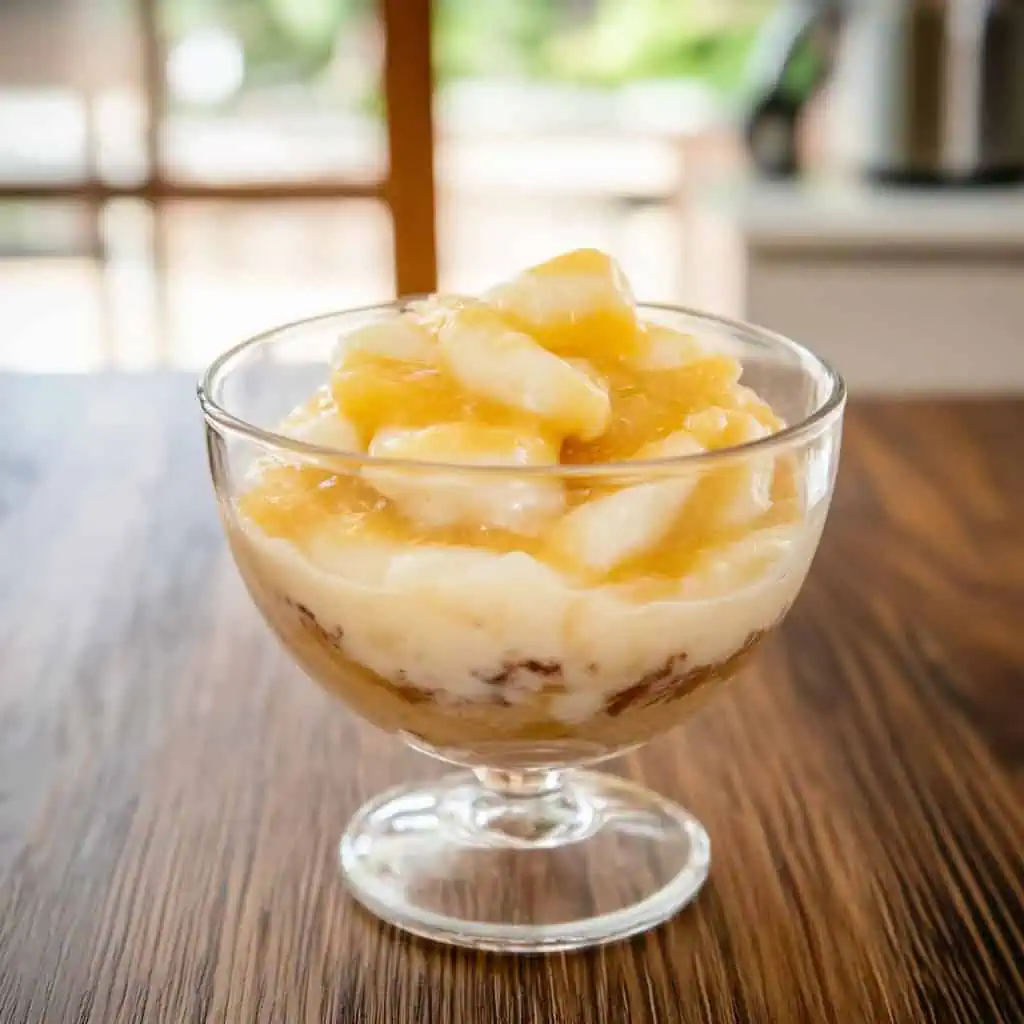
Why You'll Love This Recipe
- Refreshing Summer Treat: Perfect for hot days when you need something cool and sweet
- Nutritionally Balanced: A healthier dessert option with fiber-rich chia seeds and potassium-packed saba bananas
- Authentically Filipino: Experience the traditional flavors of the Philippines with this beloved classic
- Simple Ingredients: Uses easy-to-find ingredients with accessible alternatives
- Customizable: Easily adapt this recipe to your taste preferences and dietary needs
- Kid-Friendly: A delicious way to introduce children to Filipino cuisine
Ingredients
This recipe brings together starchy saba bananas that hold their shape when cooked, unrefined sugar for authentic caramel-like sweetness, and chia seeds for nutrition and texture.
The combination of warm, syrupy bananas with cold shaved ice and creamy milk creates the perfect contrast in temperatures and textures that makes this Filipino dessert so beloved and refreshing.
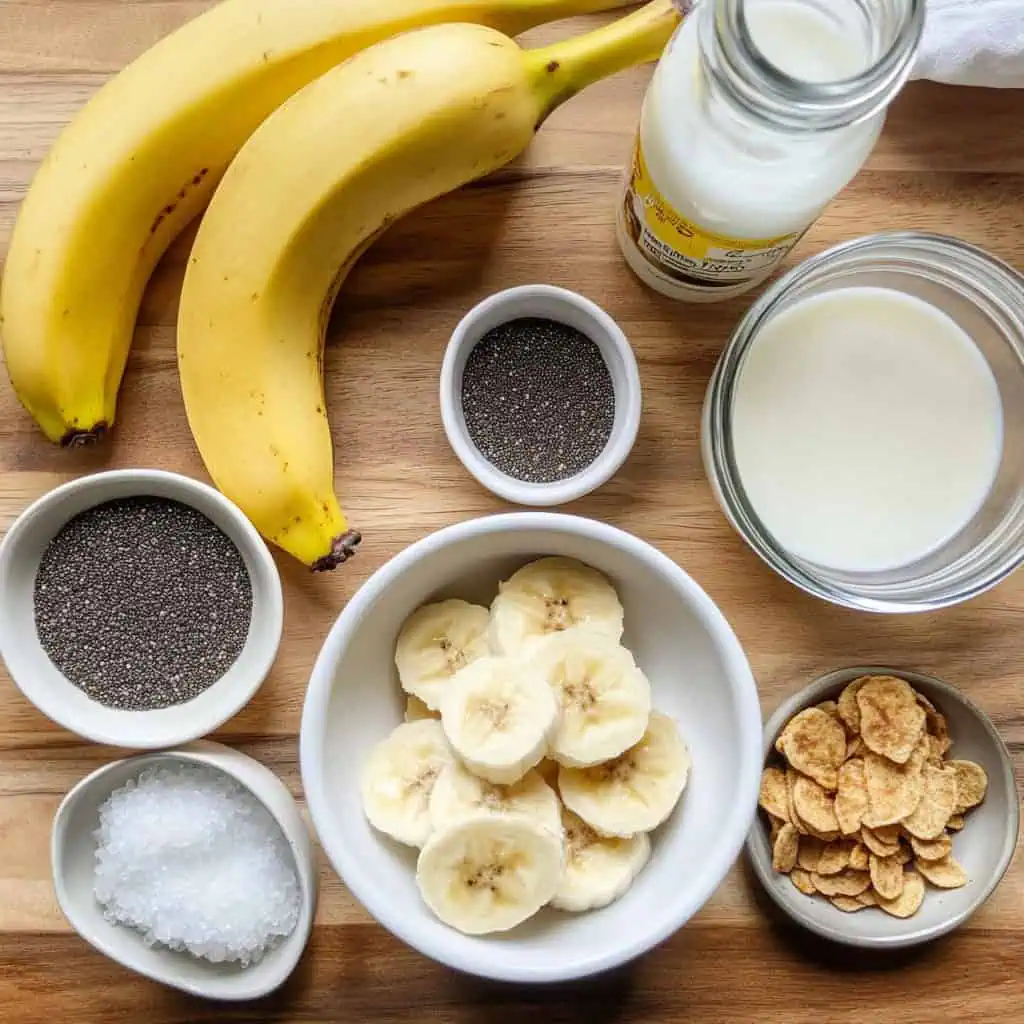
For the Banana Mixture:
- 4 whole saba bananas, sliced diagonally
- ¼ cup panutsa (Filipino unrefined cane sugar) or coconut sugar
- 2 cups water
- ¼ cup chia seeds
- ½ teaspoon vanilla extract (optional)
- 1 pandan leaf tied in a knot (optional for authentic aroma)
For Serving:
- 4 cups finely shaved ice
- 1 cup milk of your choice (whole, evaporated, coconut, or plant-based)
- 2 tablespoons toasted pinipig (flattened rice flakes) for garnish (optional)
- Drizzle of condensed milk (optional for extra sweetness)
Equipment Needed
- Heavy-bottomed saucepan: For even heating when cooking the bananas and sugar syrup
- Sharp knife and cutting board: For safely slicing the saba bananas
- Wooden spoon: For gently stirring without damaging the bananas
- Shave ice machine: To create the fine, fluffy ice texture (a food processor can work as an alternative)
- Tall glasses: For beautiful presentation and layering of ingredients
- Measuring cups and spoons: For accurate ingredient portions
- Airtight container: For storing leftover banana mixture
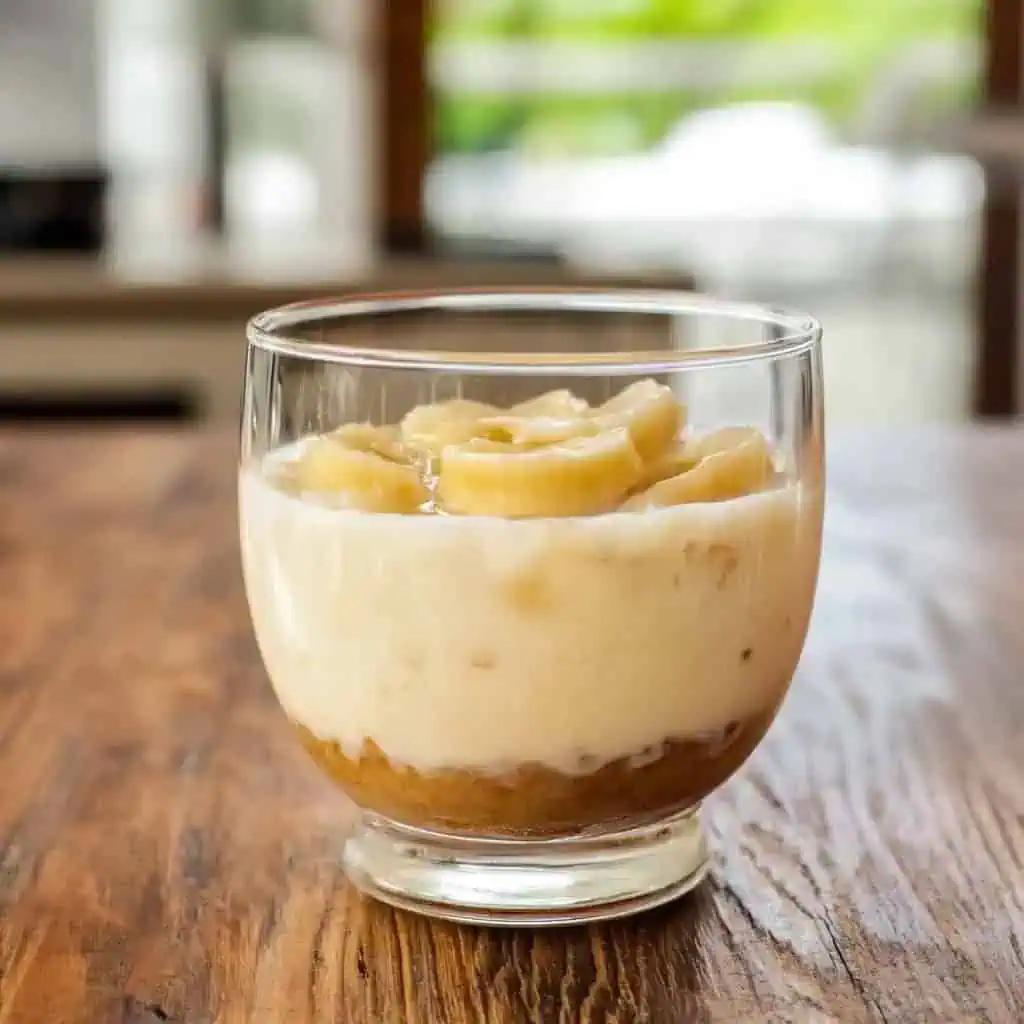
How To Make
- First, peel your saba bananas and slice them diagonally into ½-inch pieces on a cutting board. Set them aside for now.
- In a medium saucepan, combine 2 cups of water with ¼ cup panutsa or your preferred sweetener (coconut sugar or brown sugar works well). Turn the stove to medium heat (175°C/350°F) and bring the mixture to a gentle boil, stirring occasionally to help dissolve the sugar completely.
- Once boiling, reduce the heat to low (120°C/250°F) and let it simmer for about 10 minutes until the mixture slightly thickens and becomes syrupy.
- Add your sliced bananas to the simmering syrup. Cook them for 5-7 minutes on low heat until they become tender but still hold their shape. Try not to stir too much so the bananas don't break apart.
- Remove the saucepan from heat after the bananas are tender. Add ¼ cup chia seeds and stir gently until everything is mixed. If you want, you can add ½ teaspoon vanilla extract for extra flavor.
- Cover the saucepan and let the mixture cool to room temperature for about 30 minutes. The mixture will thicken as it cools and the chia seeds absorb the liquid.
- When you're ready to serve, place 2-3 tablespoons of the banana-chia mixture at the bottom of a tall glass. If you've refrigerated the mixture, let it come to room temperature first for the best taste.
- Fill the glass about ¾ full with freshly shaved ice. If you don't have a shave ice machine, crushed ice from a blender works too.
- Pour about ¼ cup milk of your choice over the ice. You can use regular milk, evaporated milk, coconut milk, or any plant-based milk you prefer.
- If you want, add some toppings like toasted pinipig (flattened rice flakes) or a drizzle of condensed milk for extra sweetness.
- Serve immediately with a long spoon so you can dig all the way to the bottom for those sweet bananas. Mix everything together as you eat or enjoy each layer separately.
- The banana-chia mixture can be stored in the refrigerator in an airtight container for up to 3 days, so you can make it ahead of time and just assemble with ice and milk when you're ready to enjoy.

Tips from Lola's Kitchen
- Use freshly shaved ice, not ice that has hardened in the freezer for the best texture and experience.
- Allow the banana mixture to cool completely before serving for the best chia seed texture.
- If panutsa is unavailable, brown sugar with a drop of molasses creates a similar flavor profile.
- For extra richness, use a combination of evaporated and condensed milk.
- The banana mixture can be made ahead and stored in the refrigerator for up to 3 days.
- It's more delicious when the banana mixture is slightly cool but not too cold.
- For a more authentic experience, serve with traditional Filipino merienda items like bibingka or puto.
- Chill your serving glasses in the freezer for 10 minutes before assembling for a longer-lasting cold dessert.
Substitutions
- Saba Bananas: If unavailable, use firm plantains or Burro bananas. Cook them 2-3 minutes longer since they're firmer than saba.
- Panutsa: Substitute with brown sugar, coconut sugar, maple syrup, or date syrup.
- Chia Seeds: Replace with basil seeds (they swell like chia) or tapioca pearls (the traditional addition).
- Milk: Any milk works well – try coconut milk for dairy-free or evaporated milk for extra richness.
- Shaved Ice: If you don't have a shave ice machine, pulse ice cubes in a food processor or use a blender with crushed ice setting.
- Pandan Leaf: Use ¼ teaspoon pandan extract or vanilla extract if leaves aren't available.
- Pinipig: Substitute with toasted Rice Krispies, crushed graham crackers, or toasted coconut flakes.
Troubleshooting
Bananas became too mushy
- Make sure the bananas aren't overripe before cooking
- Reduce cooking time by 1-2 minutes
- Handle the bananas minimally during cooking
- Use firmer saba bananas or plantains
Syrup is too thin
- Simmer the syrup longer before adding bananas
- Add 1 teaspoon of cornstarch mixed with 2 teaspoons of water to thicken
- Reduce water to 1¾ cups in your next batch
Chia seeds clumped together
- Whisk vigorously when adding chia seeds
- Stir again after 5 minutes of cooling
- Add chia seeds gradually while stirring constantly
- Try soaking chia seeds separately before adding
Ice melts too quickly
- Pre-chill your serving glasses in the freezer for 10 minutes
- Use smaller ice shavings
- Serve in insulated glasses
- Keep assembled desserts in the freezer for 5 minutes before serving
Storage & Reheating
Banana-Chia Mixture:
- Store in an airtight container in the refrigerator for up to 3 days.
- The mixture will thicken more over time; add 1-2 tablespoons of water when reheating if needed.
Reheating Instructions:
- Gently warm in a saucepan over low heat (120°C/250°F).
- Alternatively, microwave in 30-second intervals, stirring between each, until just warm.
- Allow to cool to room temperature before serving with ice.
Important Note: Never freeze the banana mixture as the texture will become unpleasantly mushy when thawed.
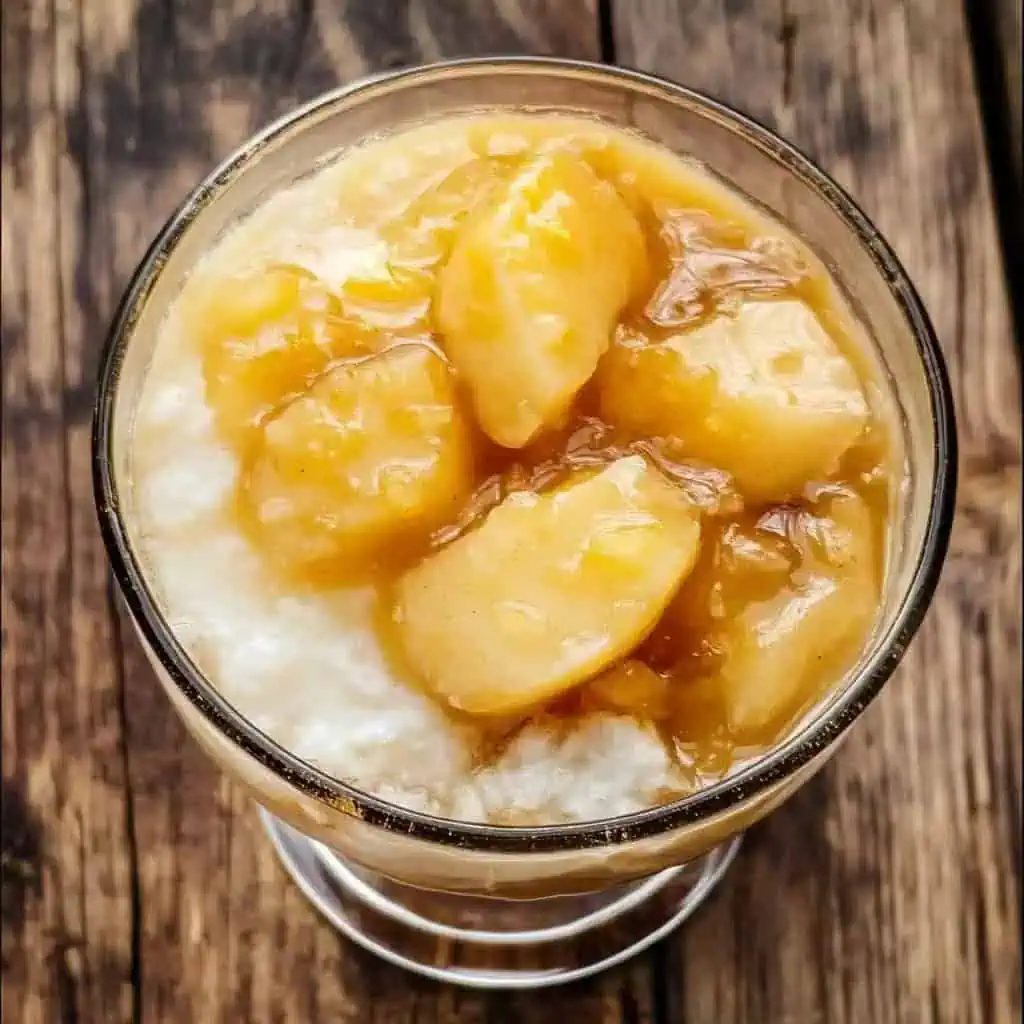
FAQ
What makes saba bananas special for this recipe?
Saba bananas have a firm texture that holds up well during cooking. They're starchier and less sweet than regular bananas, making them perfect for absorbing the sweet syrup while maintaining their shape. Their unique flavor profile also contributes to the authentic taste of this Filipino dessert.
Can I make this recipe ahead of time?
Yes! The banana-chia mixture can be prepared up to 3 days in advance and stored in the refrigerator. Just assemble with ice and milk right before serving for the best experience. This makes it perfect for planning ahead for parties or gatherings.
Is Saba Con Yelo healthy?
This version is relatively healthy for a dessert. Saba bananas provide potassium and fiber, while chia seeds add omega-3 fatty acids, fiber, and protein. The sweetness comes from natural sources, making it a better option than heavily processed desserts. You can further control the sugar content by adjusting the sweeteners to your preference.
Can children help make this recipe?
Absolutely! Kids can help measure ingredients, stir the chia seeds, and assemble the layers. Just supervise during the cooking stage with hot syrup. This is a great way to introduce children to Filipino culture through food preparation.
What is panutsa and why is it traditional?
Panutsa is unrefined cane sugar formed into hard cakes or discs. It has a deep, complex sweetness with molasses notes that adds authentic flavor to Filipino desserts. It's made by boiling sugarcane juice until it crystallizes and has been used in Filipino cooking for generations.
How do I know when the bananas are perfectly cooked?
The bananas should be tender when pierced with a fork but still hold their shape. If they're falling apart, they've been cooked too long. Properly cooked saba bananas will be soft enough to eat easily but firm enough to maintain their structure when served.
Can I use regular bananas instead of saba?
Regular bananas (Cavendish) aren't recommended as they become too mushy when cooked. If you can't find saba, plantains are your best alternative since they have a similar starch content and firmness. Just cook plantains 2-3 minutes longer to achieve the right tenderness.
How can I make this dessert more special for guests?
Serve Saba Con Yelo in clear, tall glasses to showcase the beautiful layers. Add premium toppings like toasted coconut flakes, a sprinkle of cinnamon, or a small scoop of vanilla ice cream. You can also create a "build your own" station with various toppings and milk options for a fun interactive dessert experience.
What's the best milk to use for an authentic flavor?
Evaporated milk is traditionally used in Filipino desserts for its rich, slightly caramelized flavor. For an authentic experience, use evaporated milk with an optional drizzle of condensed milk on top. However, the recipe is versatile, and any milk you prefer will work well.
Is there a way to make this recipe less sweet?
Yes, you can reduce the amount of sugar in the syrup or use natural sweeteners like honey or maple syrup to taste. The chia seeds and bananas provide natural sweetness, so you can often reduce the added sugar without compromising flavor. You can also skip the condensed milk topping and use unsweetened milk.
Related
Looking for other recipes like this? Try these:

Saba Con Yelo (Filipino Banana in Ice Dessert)
Equipment
- Heavy-bottomed saucepan For even heating when cooking the bananas and sugar syrup
- Sharp knife and cutting board For safely slicing the saba bananas
- Wooden spoon For gently stirring without damaging the bananas
- Shave ice machine To create the fine, fluffy ice texture (a food processor can work as an alternative)
- Tall glasses For beautiful presentation and layering of ingredients
- Measuring cups and spoons For accurate ingredient portions
- Airtight container For storing leftover banana mixture
Ingredients
For the Banana Mixture:
- 4 whole saba bananas saging na saba, sliced diagonally
- ¼ cup panutsa Filipino unrefined cane sugar or coconut sugar
- 2 cups water
- ¼ cup chia seeds
- ½ teaspoon vanilla extract optional
- 1 pandan leaf tied in a knot (optional for authentic aroma)
For Serving:
- 4 cups finely shaved ice
- 1 cup milk gatas of your choice (whole, evaporated, coconut, or plant-based)
- 2 tablespoons toasted pinipig flattened rice flakes for garnish (optional)
- Drizzle of condensed milk optional for extra sweetness
Instructions
- First, peel your saba bananas and slice them diagonally into ½-inch pieces on a cutting board. Set them aside for now.
- In a medium saucepan, combine 2 cups of water with ¼ cup panutsa or your preferred sweetener (coconut sugar or brown sugar works well). Turn the stove to medium heat (175°C/350°F) and bring the mixture to a gentle boil, stirring occasionally to help dissolve the sugar completely.
- Once boiling, reduce the heat to low (120°C/250°F) and let it simmer for about 10 minutes until the mixture slightly thickens and becomes syrupy.
- Add your sliced bananas to the simmering syrup. Cook them for 5-7 minutes on low heat until they become tender but still hold their shape. Try not to stir too much so the bananas don't break apart.
- Remove the saucepan from heat after the bananas are tender. Add ¼ cup chia seeds and stir gently until everything is mixed. If you want, you can add ½ teaspoon vanilla extract for extra flavor.
- Cover the saucepan and let the mixture cool to room temperature for about 30 minutes. The mixture will thicken as it cools and the chia seeds absorb the liquid.
- When you're ready to serve, place 2-3 tablespoons of the banana-chia mixture at the bottom of a tall glass. If you've refrigerated the mixture, let it come to room temperature first for the best taste.
- Fill the glass about ¾ full with freshly shaved ice. If you don't have a shave ice machine, crushed ice from a blender works too.
- Pour about ¼ cup milk of your choice over the ice. You can use regular milk, evaporated milk, coconut milk, or any plant-based milk you prefer.
- If you want, add some toppings like toasted pinipig (flattened rice flakes) or a drizzle of condensed milk for extra sweetness.
- Serve immediately with a long spoon so you can dig all the way to the bottom for those sweet bananas. Mix everything together as you eat or enjoy each layer separately.
- The banana-chia mixture can be stored in the refrigerator in an airtight container for up to 3 days, so you can make it ahead of time and just assemble with ice and milk when you're ready to enjoy.
Tips from Lola's Kitchen
- "Para mas masarap, gumamit ng bagong shave na yelo, hindi yung natigas na sa freezer." (For best taste, use freshly shaved ice, not ice that has hardened in the freezer)
- Allow the banana mixture to cool completely before serving for the best chia seed texture.
- If panutsa is unavailable, brown sugar with a drop of molasses creates a similar flavor profile.
- For extra richness, use a combination of evaporated and condensed milk.
- The banana mixture can be made ahead and stored in the refrigerator for up to 3 days.
- "Mas masarap kung medyo malamig pa rin ang saba mixture, pero hindi sobrang lamig." (It's more delicious when the banana mixture is slightly cool but not too cold)
Nutrition
The Story Behind Saba Con Yelo
Walking through the busy streets of Manila on a scorching summer day, you'll find locals seeking refuge from the heat with a glass of Saba Con Yelo in hand. This traditional Filipino dessert has been cooling down generations of Filipinos for decades, combining simple ingredients into a refreshing treat that perfectly balances sweetness, texture, and temperature.
The origins of Saba Con Yelo can be traced back to the pre-refrigeration era in the Philippines, when ice was a luxury item. During the American colonization period in the early 1900s, ice became more widely available to Filipinos, leading to the creation of numerous ice-based desserts. Creative Filipino home cooks combined native fruits with this precious commodity to create refreshing treats that could combat the tropical heat.
Saba bananas, scientifically known as Musa acuminata × balbisiana, have been cultivated in the Philippines for centuries. Unlike the common Cavendish bananas found in Western supermarkets, saba bananas are sturdier, starchier, and hold their shape when cooked. These qualities made them the perfect candidate for creating desserts that required fruit to maintain its integrity when heated and then cooled.
Traditional Filipino households would prepare Saba Con Yelo as an afternoon merienda (snack) during the hottest months. The simple combination of poached saba bananas in sweet syrup, topped with shaved ice and milk became an affordable luxury that families could enjoy together. The contrast between the warm, sweet bananas and the ice-cold milk created a sensory experience that has kept this dessert relevant through changing times.
What makes Saba Con Yelo special is its adaptability through generations. While the traditional version remains popular, modern interpretations have emerged to suit contemporary tastes and dietary preferences. The addition of chia seeds in this recipe is a perfect example of how classic Filipino dishes evolve while maintaining their cultural essence. The chia seeds not only add nutritional value with their omega-3 fatty acids and fiber but also create an interesting texture that complements the soft bananas and crunchy ice.
In Filipino culture, food is deeply connected to family and community. Sharing Saba Con Yelo during family gatherings or preparing it for loved ones during hot summer days is an expression of care and hospitality. The communal nature of enjoying this dessert strengthens bonds and creates memories that span generations.
Today, you can find Saba Con Yelo being served in traditional Filipino restaurants, street food stalls, and modern cafes with creative twists. Some versions include additional toppings like kaong (sugar palm fruit), nata de coco (coconut gel), or ube (purple yam) for added texture and flavor. However, the essence remains the same – a simple, satisfying dessert that provides relief from the heat while celebrating the natural sweetness of native fruits.
As Filipino cuisine gains international recognition, desserts like Saba Con Yelo introduce global food enthusiasts to the unique flavor profiles and ingenious cooking techniques that define Filipino food culture. Making this dessert at home allows you to experience an authentic taste of the Philippines, connecting you to a rich culinary tradition that values resourcefulness, flavor harmony, and the joy of sharing food with others.
Whether you're looking to explore Filipino cuisine, need a refreshing dessert for hot summer days, or want to enjoy a healthier sweet treat, Saba Con Yelo offers a delightful experience that has stood the test of time. Its enduring popularity speaks to the brilliance of Filipino culinary creativity – transforming humble ingredients into something truly special that continues to bring joy to people of all ages.
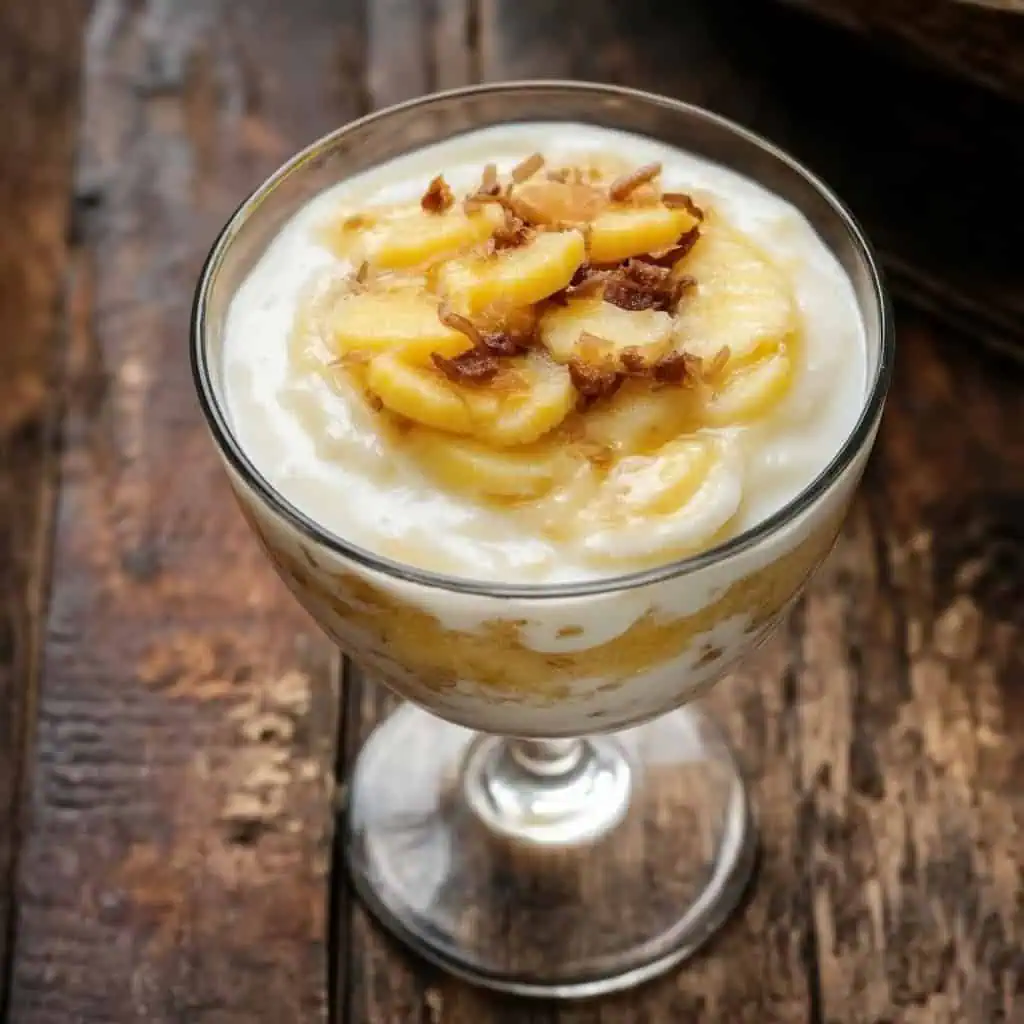

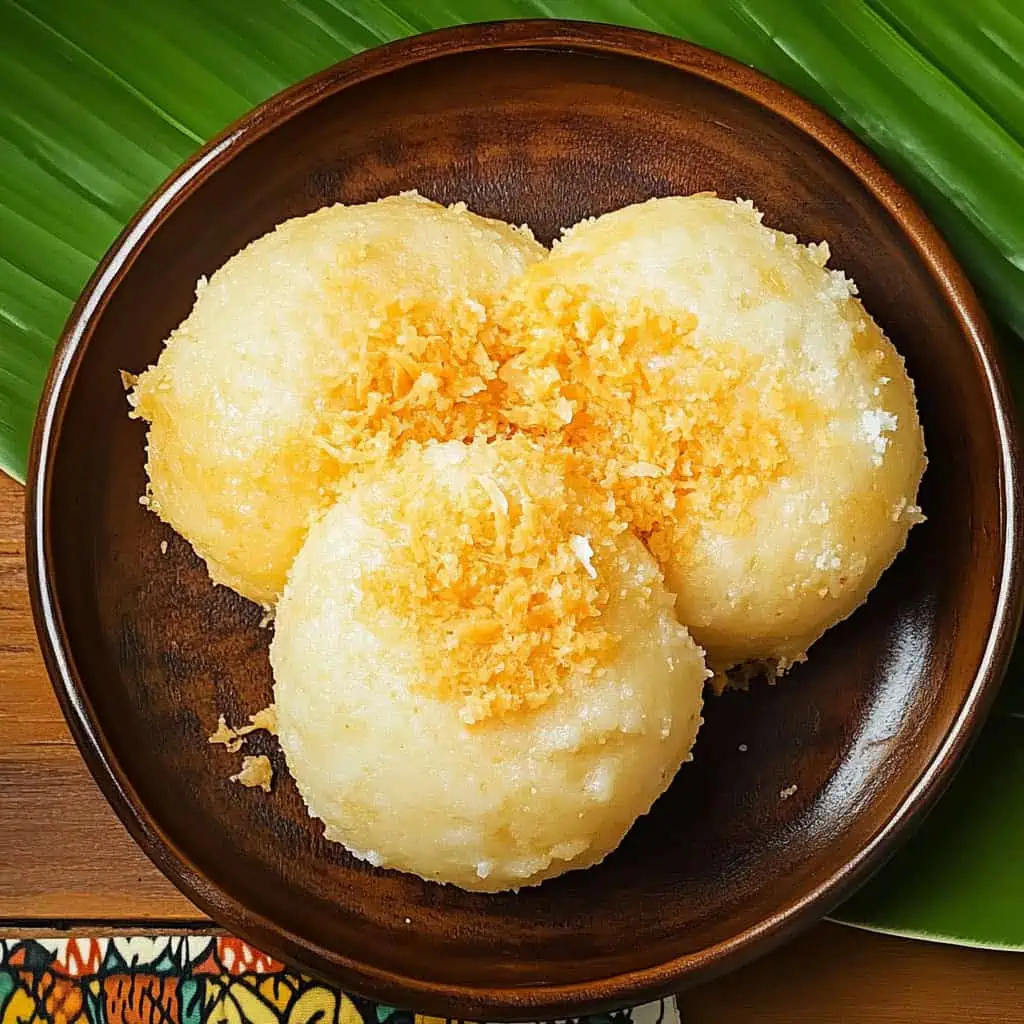
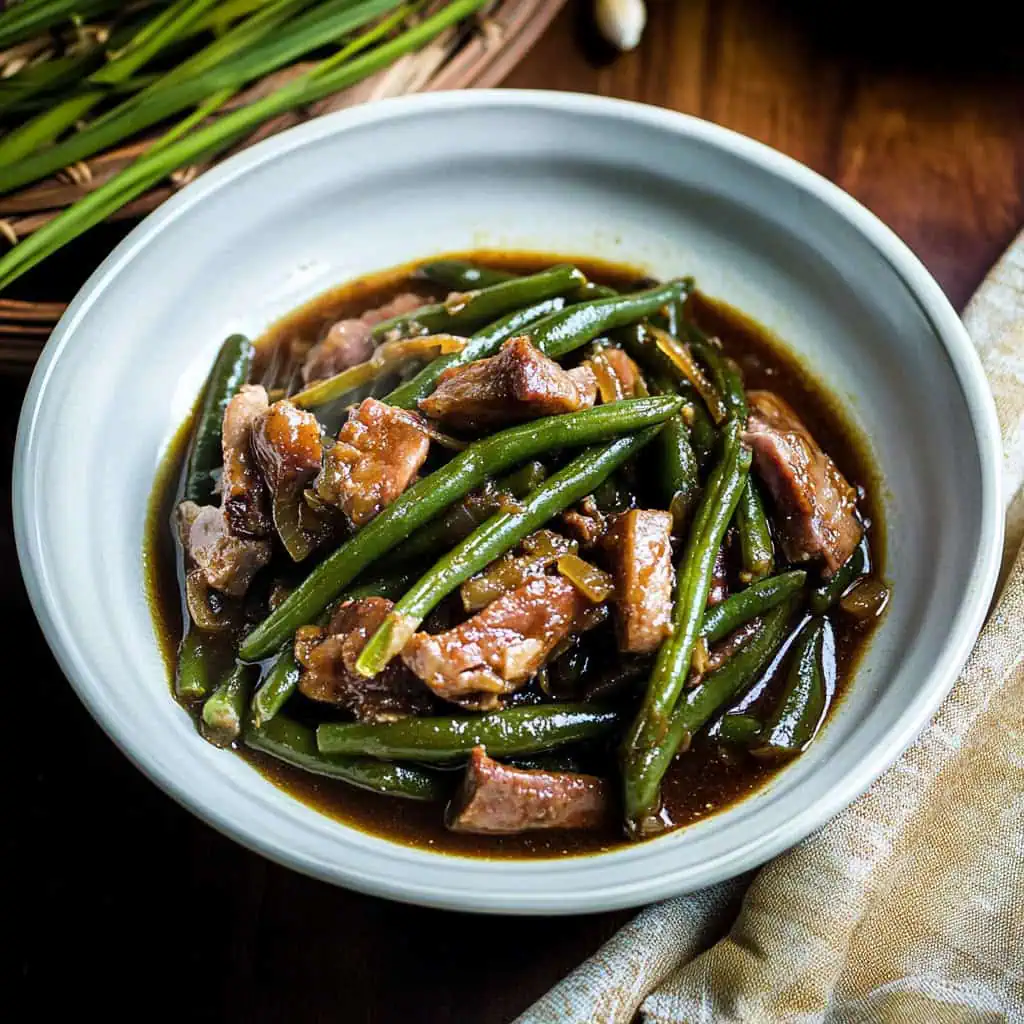
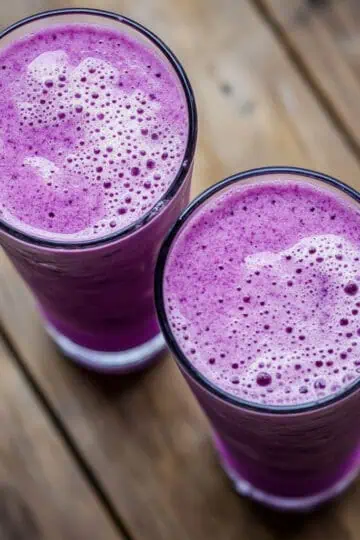
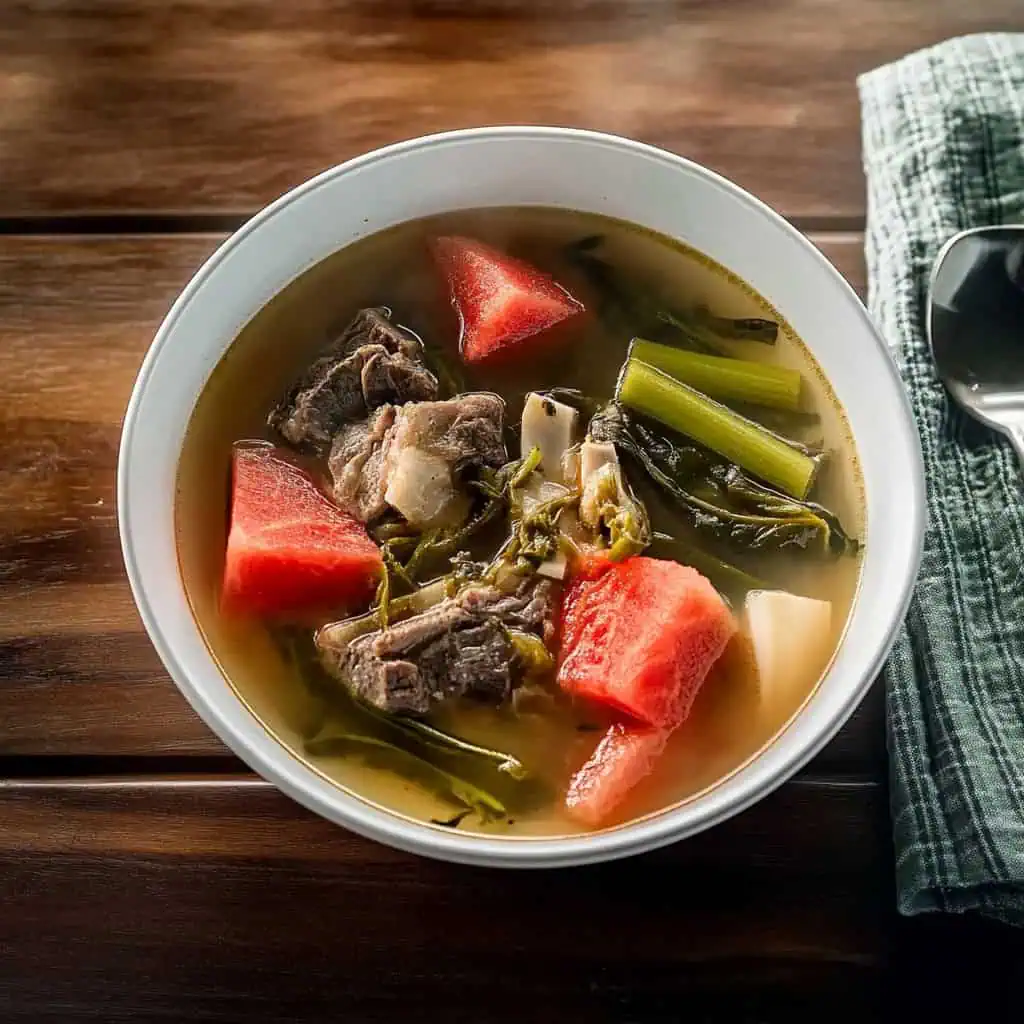

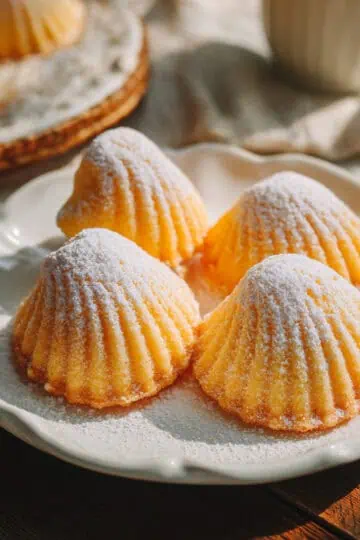
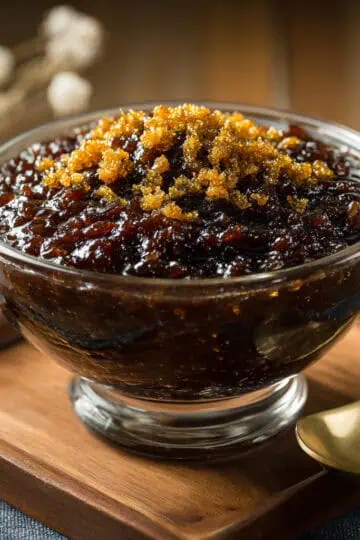
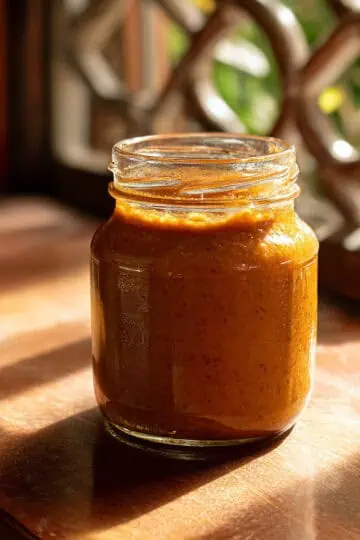
Comments
No Comments